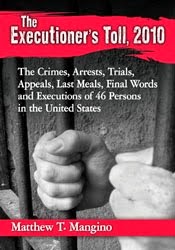Matthew T. Mangino
GateHouse News Service
November 29, 2013
This past summer, Florida Republican state Rep. Matt Gaetz, chairman of the state’s Criminal Justice Subcommittee, said, when asked about repealing the state’s "stand your ground" law, he didn’t support “changing one damn comma” in the law.
Gaetz got his way. Earlier this month the committee rejected the repeal effort by an 11-2 vote. "Floridians are done being hapless victims," said Gaetz.
Those states with stand your ground are hanging on to it and some without are taking action. The Ohio House of Representatives voted recently to adopt a variation of stand your ground.
Under current Ohio law residents have a duty to retreat before using deadly force. Ohio H.B. 203 would eliminate that duty to retreat.
The legislation has been mockingly referred to as the “George Zimmerman bill” named for the Florida man — recently arrested again — whose killing of 17-year-old Trayvon Martin ignited a firestorm around stand your ground and the castle doctrine.
There are notable opponents to the deadly self-defense laws. U.S. Attorney General Eric Holder, Jr. has taken a strong stance against stand your ground laws.
"There has always been a legal defense for using deadly force if — and the 'if' is important — no safe retreat is available," Holder said. "It's time to question laws that senselessly expand the concept of self-defense and sow dangerous conflict in our neighborhoods."
Since Florida enacted the first stand your ground law in 2005, at least 22 other states have enacted some variation of the expansive self-defense law. The issue is unsettled even in states that have adopted the law.
In March, months before the Zimmerman trial, the New Hampshire House passed a bill to repeal the state's stand your ground law enacted in 2011. The effort later failed in the state senate, according to the Concord Monitor.
Last summer, Arizona Sen. John McCain, a Republican, called for a review of his state's stand your ground law.
According to the National Conference of State Legislatures, a bill in North Carolina that would have amended aspects of the law regarding use of force against an intruder never made it out of committee. There were about a dozen bills before state legislatures in 2012, several of which would have amended circumstances allowing for use of force by citizens. None of those proposals advanced.
In Pennsylvania, the chances of repealing the expanded castle doctrine are next to none. In 2011, 45 out of 50 state senators voted in favor of the law. There is little stomach among Pennsylvania lawmakers for quarrelling with gun supporters.
There is growing concern that stand your ground laws may be doing more harm than good. There are a number of studies indicating that stand your ground is actually increasing homicides.
A Texas A&M University study found "that homicides go up by 7 to 9 percent in states that pass the laws, relative to states that didn't pass the laws over the same time period," according to A&M economist Mark Hoekstra.
As to whether the laws reduce crime — by creating a deterrent for criminals — he says, "we find no evidence of any deterrence effect over that same time period."
A study sponsored by Mayors Against Illegal Guns found “that justifiable homicides increased by 53 percent in states with stand your ground laws, while decreasing by 5 percent in states without these laws.”
Supporters of Florida’s law point to the state's declining crime rate as evidence that stand your ground protects innocent Floridians from violent crime. The Florida Department of Law Enforcement reported a 5.2 percent drop in serious crime during the first half of 2013.
Regardless of the research, the political climate is clear. Adam Winkler, a law professor at the University of California, Los Angeles, told the Christian Science Monitor, "For better or worse, stand your ground laws are here to stay."
Matthew T. Mangino is of counsel with Luxenberg, Garbett, Kelly and George and the former district attorney for Lawrence County, Pa. You can read his blog at www.mattmangino.com and follow him on Twitter at @MatthewTMangino.
Visit the Column







